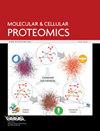蛋白质组学对细胞生物学的影响,以解析细胞结构和功能。
IF 6.1
2区 生物学
Q1 BIOCHEMICAL RESEARCH METHODS
Molecular & Cellular Proteomics
Pub Date : 2024-05-01
Epub Date: 2024-04-02
DOI:10.1016/j.mcpro.2024.100758
引用次数: 0
摘要
蛋白质组学的加速发展使其能够与电磁显微镜和光学显微镜成像、蛋白质结构的冷冻电镜以及人工智能相结合,以纳米到亚纳米分辨率全面准确地解析细胞结构中的蛋白质。蛋白质组学的发展速度继续超过以实验为基础的结构成像,但它们的最终整合是实现所有蛋白质汇编目标的必经之路,从而从机理上了解细胞的结构和功能。本文章由计算机程序翻译,如有差异,请以英文原文为准。
Proteomics Impact on Cell Biology to Resolve Cell Structure and Function.
The acceleration of advances in proteomics has enabled integration with imaging at the EM and light microscopy levels, cryo-EM of protein structures, and artificial intelligence with proteins comprehensively and accurately resolved for cell structures at nanometer to subnanometer resolution. Proteomics continues to outpace experimentally based structural imaging, but their ultimate integration is a path toward the goal of a compendium of all proteins to understand mechanistically cell structure and function.
求助全文
通过发布文献求助,成功后即可免费获取论文全文。
去求助
来源期刊

Molecular & Cellular Proteomics
生物-生化研究方法
CiteScore
11.50
自引率
4.30%
发文量
131
审稿时长
84 days
期刊介绍:
The mission of MCP is to foster the development and applications of proteomics in both basic and translational research. MCP will publish manuscripts that report significant new biological or clinical discoveries underpinned by proteomic observations across all kingdoms of life. Manuscripts must define the biological roles played by the proteins investigated or their mechanisms of action.
The journal also emphasizes articles that describe innovative new computational methods and technological advancements that will enable future discoveries. Manuscripts describing such approaches do not have to include a solution to a biological problem, but must demonstrate that the technology works as described, is reproducible and is appropriate to uncover yet unknown protein/proteome function or properties using relevant model systems or publicly available data.
Scope:
-Fundamental studies in biology, including integrative "omics" studies, that provide mechanistic insights
-Novel experimental and computational technologies
-Proteogenomic data integration and analysis that enable greater understanding of physiology and disease processes
-Pathway and network analyses of signaling that focus on the roles of post-translational modifications
-Studies of proteome dynamics and quality controls, and their roles in disease
-Studies of evolutionary processes effecting proteome dynamics, quality and regulation
-Chemical proteomics, including mechanisms of drug action
-Proteomics of the immune system and antigen presentation/recognition
-Microbiome proteomics, host-microbe and host-pathogen interactions, and their roles in health and disease
-Clinical and translational studies of human diseases
-Metabolomics to understand functional connections between genes, proteins and phenotypes
 求助内容:
求助内容: 应助结果提醒方式:
应助结果提醒方式:


